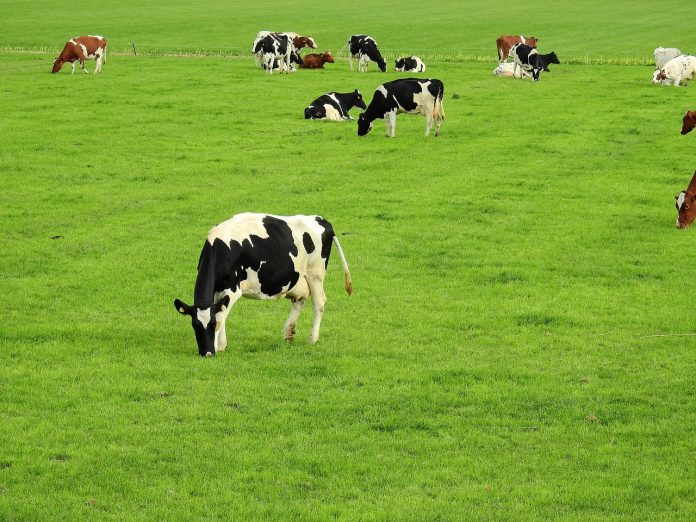There are many plants with toxicity risk to livestock, and prussic acid concerns rank as some of the most common of which to be aware. Perhaps this time of year, we hear the most discussion about prussic acid because plants that are damaged, wilted, crushed or frozen will release specific enzymes that hydrolyze glycosides to cyanide.
Prussic acid is used interchangeably with hydrogen cyanide. Frosted forages that contain johnson grass, Sudan grass or sorghums feature in many of our discussions as high risk. Throughout the growing season, the risk of poisoning from wilted cherry tree leaves is also a concern in our area.
Not all plants release cyanide, but there is an extensive list of over 2,000 that have the potential, and that list can be narrowed down to a relative few with high consequences.
Cyanide creation. In brief, sugar compounds form in plants that hold the molecules necessary to create cyanide. This is what we refer to as a cyanogenic glycoside. These cyanogenic glycosides can accumulate over time, but by themselves are not toxic.
Toxicity occurs when the compounds are acted on when plant structure is damaged and specific enzymes are activated that release cyanide from the compound. Primarily, our concerns are with ruminant animals but there are parts of the world (tropical) where there are plant foods (casava) that can present a risk to humans when poorly prepared in the diet.
In simple terms,when the structure of some plants are damaged, a reaction occurs between certain sugar compounds (glycosides) and enzymes that will release cyanide.
Low levels of cyanogenic glycosides exist in the plant environment all around us which means there is always some type of potential for cyanide release. When certain conditions occur, the risk of livestock encountering higher concentrations is greater and that is the risk we are managing for.
Ruminant livestock are at greater risk than other mammals because conditions inside the rumen can be favorable to this reaction that releases cyanide.
Most parts of the plant contain cyanogenic glycosides, but it is the newest growth and the seeds that have the highest concentrations and most potential for HCN release. Drying plants decreases potential over time and ensiling is also proven to reduce cyanogenic glycoside content.
Cellular respiration is inhibited in the presence of HCN, which essentially means the flow of oxygen is interrupted throughout the body. This can be a rapid process, taking as little as 15 minutes to be lethal to an adult cow, and treatment options are limited in most cases.
Be aware. Our best options are prevention and to be aware of our risk potential so we can try to avoid high risk situations. Fully cured hay and silage will destroy the cyanogenic glycosides.
Recently cut, droughted or frosted sorghums may be the highest risk scenarios that we encounter. In general, fence lines should be watched closely for any wilted plants. We often reference fallen cherry trees, but other plants like service berry or choke-cherry can accumulate these glycosides as well, so a general rule is to be attentive to all fence-line plants that are damaged or wilting.
Develop some familiarity with the resources at a forage lab. Toxicity testing is available at many forage labs and a rapid field test can also be purchased for quick field level evaluation.
How much cyanide is considered dangerous? One gram of HCN is considered enough to kill a 1,000-pound cow. In terms of pounds of plant material, the example of cherry leaves is 1.2 to 4.8 pounds of wilted black cherry leaves could constitute a lethal dose with a 1,200-pound cow as a reference.
In addition to prussic acid, you will find much discussion on nitrate toxicity and just like prussic acid, we often see these discussions and warnings ramp up in the fall, particularly in drought conditions which currently persist in the southeast Ohio and West Virginia region.
In an attempt to simplify the prussic acid discussion, any action that damages plant structure creates risk of cyanide poisoning. Under normal grazing conditions, we see little risk and in properly cured and dried forages we see little risk.
Changing conditions — frost, wilting, drought — that damage plant tissue structure release cyanide. This is not a new message, but one that is often repeated because the risk is real.
I do like to remind myself that these are very normal environmental reactions that happen in nature all around us every year on a regular basis. When we specialize in specific plants and specific farming operations, we concentrate risk into these systems so it helps to keep some perspective.
The good news is the risk is generally manageable with attention to changing weather conditions and modern growing practices.













